3 Day Top End. Kakadu Art Kakadu Waterfalls Katherine Gorge Edith Falls
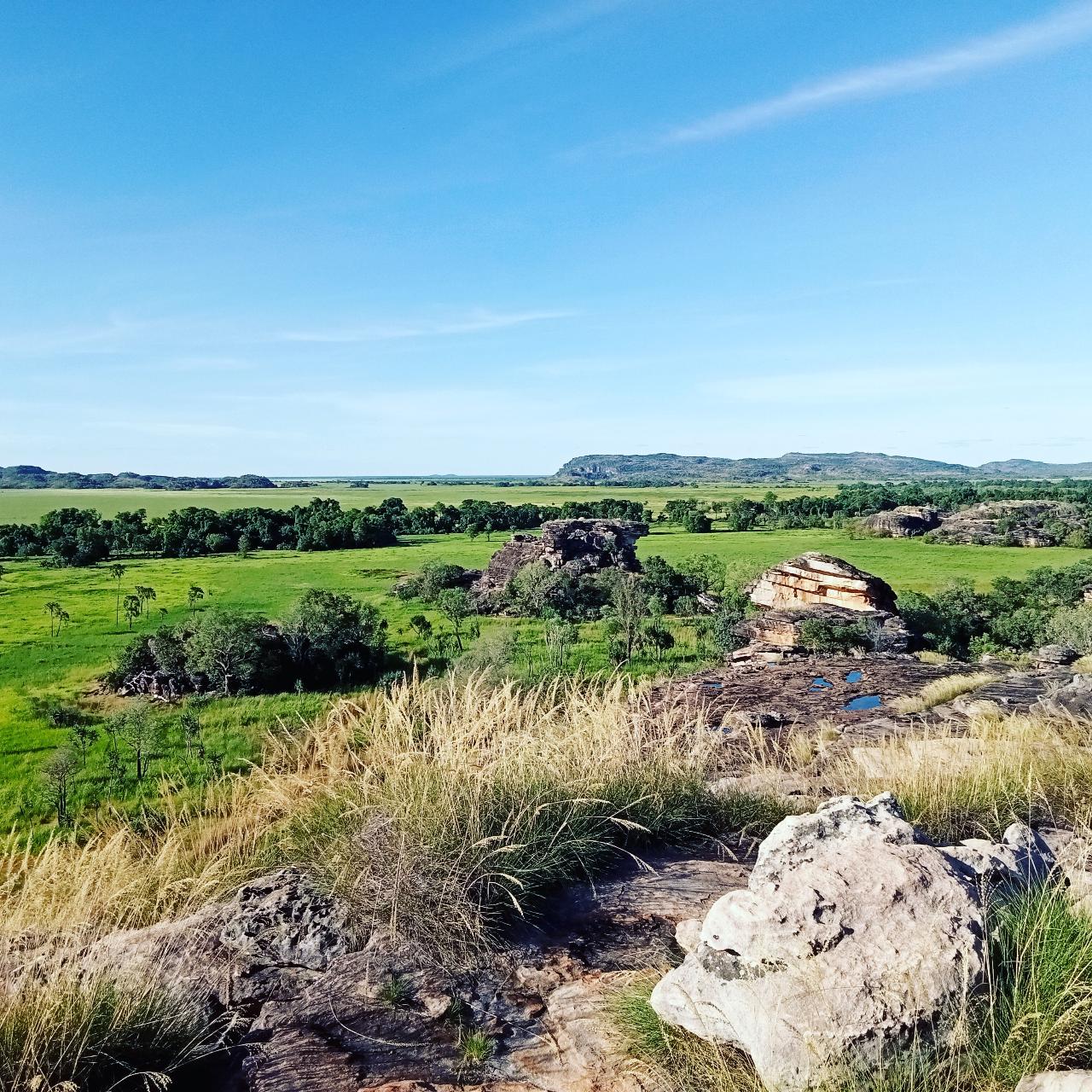
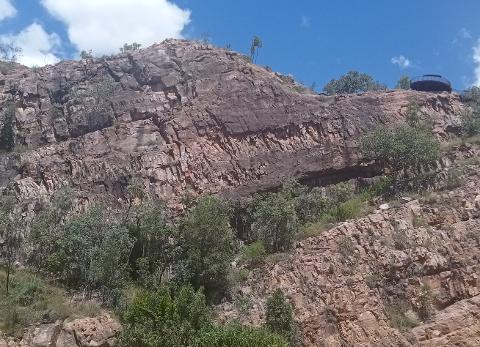
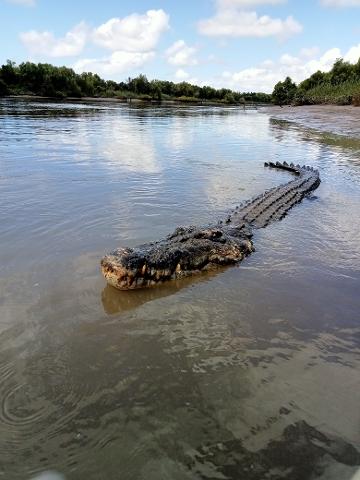

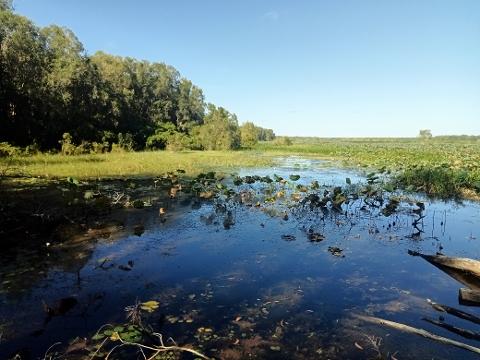
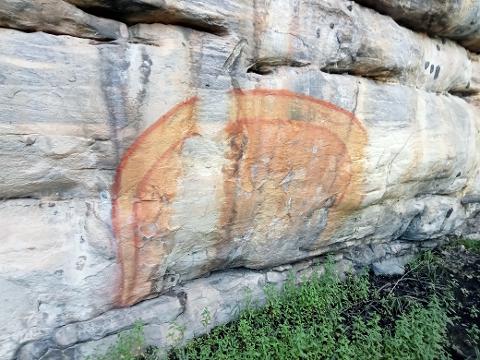
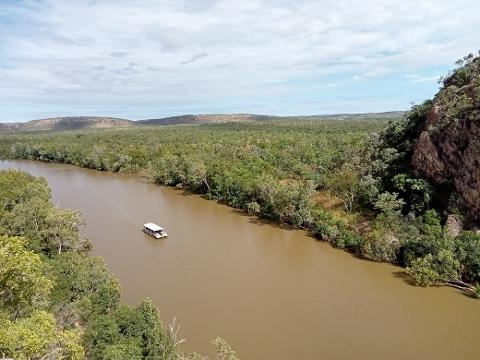
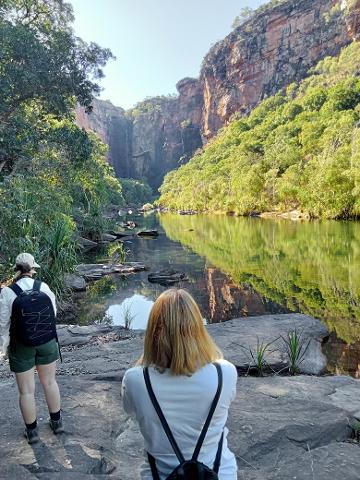



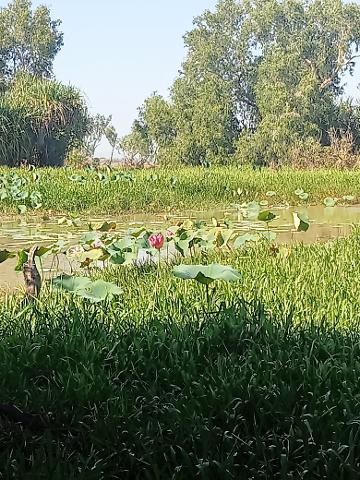
- Duration: 3 Days (approx.)
- Location: MOIL, NT
- Product code: 3DayTopEnd
DAY 1 - Departure 6.00 AM
Welcome to the PRIVATE PERSONALIZED BEST TOUR in ENGLISH FRENCH ITALIAN SPANISH. We are going to experience THE BEST TOP END experience you can in just 3 day tour.
Mattia will pick you up at your accommodation.
We are going to drive for around 50 minutes heading to Fogg Dam. It is time for Breakfast and Bird watching. Sometimes crocodiles and buffalos are around Pandanus Billabong.
Enjoy your continental breakfast and fresh brewed coffee or tea.
On the way to Kakadu we are going to stop at the welcome sign for the iconic photo.
DAY 1 -MAMUKALA
Mamukala is a wetland area located in the northern part of Kakadu, near the East Alligator River. It is known for its birdlife, particularly during the dry season when waterbirds gather in large numbers. Visitors to Mamukala can often observe various species of waterbirds, including magpie geese, egrets, herons, and ducks.
Aboriginal people have a deep cultural connection to the land in Kakadu, including Mamukala, and their traditional knowledge and stories are an integral part of the park's identity. The park is also home to ancient rock art sites, depicting the cultural and spiritual practices of the Aboriginal people who have inhabited the region for thousands of years.
DAY 1 - NOURLANGIE
Nourlangie Rock, also known as Burrunggui, it is another significant site within Kakadu National Park in the Northern Territory of Australia. Here are some key points about Nourlangie:
Like Ubirr, Nourlangie is famous for its Aboriginal rock art. The site features a variety of paintings that depict Indigenous stories, Dreamtime figures, and historical events. The rock art at Nourlangie spans thousands of years, providing a glimpse into the rich cultural history of the region.
One of the main attractions at Nourlangie is the Anbangbang Gallery, a sheltered rock art site that showcases some of the most well-preserved and diverse Aboriginal art in Kakadu. Guided tours are often available to provide insights into the cultural significance of the art.
Nourlangie offers panoramic views of the surrounding landscape, including the Arnhem Land escarpment. There are walking trails around the site, allowing visitors to explore the rock formations and enjoy the scenery.
The site holds cultural significance for the Bininj/Mungguy people, the traditional owners of the land. The stories depicted in the rock art reflect the cultural practices, spirituality, and daily life of the Indigenous people who have inhabited the region for thousands of years.
DAY 1 - UBIRR - THE BEST KAKADU lookout.
Ubirr is a significant Aboriginal rock art site located in Kakadu National Park in the Northern Territory of Australia. Kakadu National Park is known for its cultural and natural heritage, and Ubirr is one of the park's iconic landmarks. Here are some key points about Ubirr:
Ubirr is renowned for its ancient Aboriginal rock art, which dates back thousands of years. The rock art at Ubirr includes paintings that depict traditional Indigenous stories, Dreamtime narratives, and the flora and fauna of the region. The art serves as a cultural record and is of great importance to the local Indigenous people.
In addition to its cultural significance, Ubirr offers stunning panoramic views of the surrounding landscape. A short climb to the top of the rock formation provides visitors with a breathtaking vista of the Nadab floodplain, the East Alligator River, and the Arnhem Land plateau.
Many visitors to Ubirr choose to experience the sunset from the top of the rocks. The changing colors of the sky, combined with the ancient rock formations and the landscape below, create a memorable and picturesque setting.
The rock art and cultural sites at Ubirr are important to the local Bininj/Mungguy people, the traditional owners of the land. The site is a reflection of their deep connection to the land and their cultural heritage.
Kakadu National Park provides facilities for visitors, including walking tracks, interpretive signs, and designated viewing areas. Ranger-guided talks and tours are often available to provide insights into the cultural and natural features of Ubirr.
DAY 1 - CAHILLS CROSSING
Cahills Crossing is a notable location in Kakadu National Park in the Northern Territory of Australia. Here are some key points about Cahills Crossing:
Cahills Crossing is situated on the East Alligator River, which flows through Kakadu National Park. It is located on the Arnhem Highway, providing a route across the river.
Cahills Crossing is known for being a river crossing point, allowing vehicles to traverse the East Alligator River. The crossing is tidal, and it can be impassable during high tide when saltwater crocodiles are known to congregate in the area.
The East Alligator River is home to a significant population of saltwater crocodiles, which are known to be some of the largest and most aggressive crocodiles in the world. Visitors to Cahills Crossing are advised to exercise extreme caution and adhere to any warning signs or guidelines provided.
The crossing offers scenic views of the river and surrounding landscapes. It's a popular spot for tourists to stop and observe the wildlife, including birds and crocodiles.
The East Alligator River holds cultural significance for the local Indigenous people, particularly the Bininj/Mungguy people. The area is rich in cultural stories, and the river plays a role in traditional beliefs and practice. Cahills Crossing has become a tourist attraction in its own right, drawing visitors who are interested in experiencing the unique environment of the Northern Territory and observing wildlife in its natural habitat.
Night at the Hotel.
All our tours are accommodated. We aim to get a room at the Mercure Hotel or Cooinda. It depends on the time of booking and how many people are coming on the tour. Basic price includes basic room (family shared room for parents with kids younger than 14 years old, or twin rooms). We can also upgrade to luxury accommodation.
DAY 2 - YELLOW WATER CRUISE OR JIM JIM FALLS
On the second day you can choose. Or Jim Jim Falls or Yellow Water Cruise.
option 1 JIM JIM FALLS
It is and adventurous 1-hour 4wd, plus 1 hour very energetic difficult walk to get to one of the most remote places in Kakadu.
option 2 YELLOW WATER CRUISE
Enjoy the the beautiful Yellow Water Billabong. It is 1.5-hour cruise along the Yellow Water Billabong and South Alligator River. You can spot crocodiles, jabirus, whistling ducks and beautiful lily flowers.
JIM JIM FALLS
Jim Jim Falls is one of the stunning natural attractions located within Kakadu National Park in the Northern Territory of Australia. Here are some key points about Jim Jim Falls:
Jim Jim Falls is situated in the southern part of Kakadu National Park. Access to Jim Jim Falls is typically by four-wheel-drive vehicles and is subject to seasonal conditions.
Jim Jim Falls is known for its impressive waterfall, which drops from the Arnhem Land escarpment. The falls are surrounded by high cliffs and lush vegetation, creating a picturesque and secluded natural setting.
The area around Jim Jim Falls is characterized by rugged landscapes, including towering cliffs, monsoon forests, and plunge pools. The scenery is breathtaking, offering visitors a sense of the remote and untouched beauty of the Australian Outback.
Access to Jim Jim Falls may be restricted during the wet season (typically November to April) due to flooding and difficult road conditions. It's essential to check with park authorities for the latest information on road accessibility before planning a visit.
YELLOW WATER
Yellow Water refers to both a body of water and a popular tourist destination within Kakadu National Park in the Northern Territory of Australia.
Yellow Water is a large billabong (an Australian term for an oxbow lake or seasonal waterhole) located in the heart of Kakadu National Park. It is known for its extensive wetlands, lush vegetation, and abundant wildlife. The billabong is part of the South Alligator River floodplain.
Yellow Water is renowned for its rich biodiversity, especially in terms of birdlife and crocodiles.
DAY 2 - MAGUK
Maguk, also known as Barramundi Gorge, is another beautiful natural attraction within Kakadu National Park in the Northern Territory of Australia. Here are some key points about Maguk:
Maguk is situated in the southern part of Kakadu National Park. It is known for its stunning waterfall and pristine plunge pool.
The main attraction at Maguk is the waterfall that cascades into a deep plunge pool. The clear waters of the pool are surrounded by high cliffs and lush vegetation, creating a picturesque setting. The pool is a popular spot for swimming, especially during the dry season.
Getting to Maguk usually involves a hike along a walking trail that takes visitors through monsoon forests and rocky terrain. The walk is approximately 2 kilometers one way and leads to the waterfall and plunge pool.
Like many locations in Kakadu, Maguk is subject to seasonal variations. Access to the site may be limited during the wet season due to flooding, and it's essential to check for the latest information on road conditions and trail accessibility.
DAY 2 - PINE CREEK
Pine Creek is a historic town located in the Northern Territory of Australia. Here are some key points about Pine Creek:
Pine Creek is situated approximately 90 kilometers north of Katherine and about 220 kilometers south of Darwin. It is located in a region known for its mining history and natural attractions.
Pine Creek has a rich history, primarily associated with gold mining. Gold was discovered in the area in the late 19th century, leading to a gold rush and the establishment of the town. The railway line between Darwin and Larrimah was also built during this time to transport goods and minerals.
The town has preserved some of its historic sites, including old mining relics and buildings. The Railway Precinct and Miners Park provide insights into the town's past, showcasing historic structures and artifacts.
Pine Creek's mining heritage is evident in the remnants of old gold mines and mining equipment scattered throughout the area. Visitors interested in history and heritage can explore these sites to learn more about the town's role in the gold rush era.
DAY 2 - KATHERINE
Katherine is a town located in the Northern Territory of Australia. Here are some key points about Katherine:
Katherine is situated approximately 320 kilometers southeast of Darwin, the capital city of the Northern Territory. It is an important regional center and a gateway to several natural attractions.
The town is situated on the banks of the Katherine River, and the river plays a significant role in the region's geography and recreational activities. Katherine Gorge (Nitmiluk National Park) is a series of 13 gorges along the Katherine River and is a major tourist attraction.
Katherine Hot Springs: The town is known for its natural hot springs, providing a popular spot for locals and visitors to relax. The Katherine Hot Springs are located on the banks of the Katherine River and offer a warm and tranquil bathing experience.
Night at the Hotel. (basic room included).
DAY 3 - KATHERINE GORGE SUNRISE CRUISE
Experiencing a sunrise at Katherine Gorge, also known as Nitmiluk Gorge, is a breathtaking and memorable experience. Here are some key aspects of enjoying a sunrise at Katherine Gorge:
Early Arrival: To witness the beauty of the sunrise, plan to arrive at the gorge early. The exact time of sunrise will vary depending on the time of year, so check the local sunrise time and aim to be at the gorge well before dawn.
Boat Cruise or Lookout: There are different ways to enjoy the sunrise at Katherine Gorge. Some visitors opt for a sunrise boat cruise along the river, allowing them to witness the changing colors of the sky reflected on the water. Others prefer to view the sunrise from one of the designated lookouts, such as the Baruwei Lookout or the Southern Rockhole.
The early hours of the morning are often a prime time for wildlife activity. Keep an eye out for birds, including the many species that inhabit the area, as well as other wildlife that may be active during this time.
Depending on the time of year, mornings can be cool, so it's advisable to dress appropriately. Bring a light jacket or sweater and wear comfortable shoes if you plan to explore the lookout areas.
DAY 3 - EDITH FALLS
Edith Falls, also known as Leilyn, is a series of waterfalls and pools located within Nitmiluk National Park in the Northern Territory of Australia. Here are some key points about Edith Falls:
Edith Falls is situated within Nitmiluk National Park, approximately 42 kilometers north of Katherine. The falls are part of the Edith River, which flows through the park.
The falls consist ofa series of cascading waterfalls that flow into a large plunge pool and several smaller natural pools. The main pool at the base of the falls is a popular spot for swimming, surrounded by lush vegetation and rocky outcrops.
Edith Falls is well-known for its safe and inviting swimming conditions, making it a favorite destination for locals and tourists alike. The crystal-clear water and picturesque setting make it an ideal place to cool off, especially during the warmer months.
The area around Edith Falls offers several hiking trails that cater to different fitness levels. The Leliyn Trail is a popular option, providing scenic views of the falls and surrounding landscapes. Longer trails lead to more remote areas within the national park.
ADELAIDE RIVER WAR CEMETERY
The Adelaide River War Cemetery is a Commonwealth War Graves Commission cemetery located in the Northern Territory of Australia. Here are some key points about the Adelaide River War Cemetery:
The Adelaide River War Cemetery is situated in the town of Adelaide River, approximately 115 kilometers south of Darwin. It is located along the Stuart Highway, the main north-south road in the Northern Territory.
The cemetery was established during World War II and contains the graves of service personnel who lost their lives in the region during the war. Adelaide River was an important military base and transit point for troops during the conflict.
The cemetery is maintained by the Commonwealth War Graves Commission, an organization responsible for commemorating the war dead of the Commonwealth countries. It serves as the final resting place for servicemen and women from various nations.
The Adelaide River War Cemetery contains the graves of both Allied and Axis personnel, reflecting the wartime history of the region. The majority of the graves belong to members of the Australian and British forces.
In addition to individual graves, the cemetery features various memorials and plaques dedicated to those who served and lost their lives in the Northern Territory during World War II.
The cemetery is open to the public, and visitors are welcome to pay their respects to the fallen. Information panels at the site provide historical context and details about the individuals buried there.
END OF THE TOUR
Mattia will drop you off anywhere in Darwin Region.
